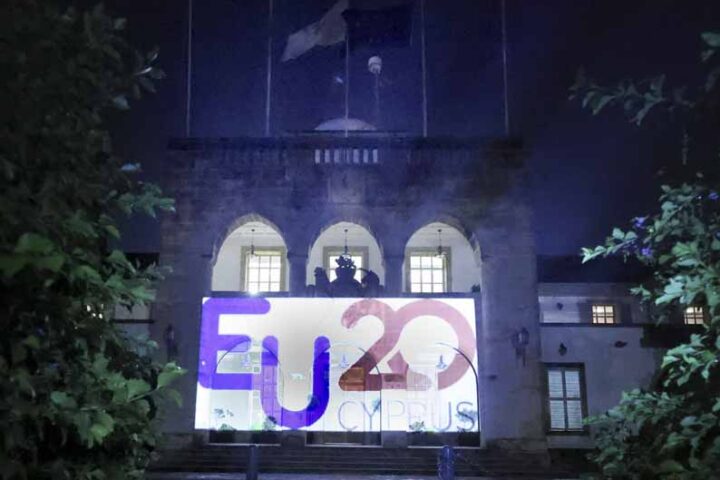By Dr. Jim Leontiades
Cyprus International Institute of Management
Â
If there is one institution that defines Western civilisation it is the university. Invented in Europe (more specifically in Greece) European universities are presently experiencing something of a crisis of confidence. There are calls for change but considerable disagreement as to what that change should be.
The reasons behind the European unease are multiple but they have received added impetus from the recent announcement of this year’s six Nobel prizes. All four of the science prizes for this year, those for Physics, Chemistry, Medicine and Economics, went to Americans, none to any European university. The poor showing of European universities has understandably raised questions. The Nobel Prize is more than an individual achievement. Collectively, these prizes are also indicative of the level scientific achievement in the societies that support their recipients.
There was a time when we could have expected that European universities would be pre-eminent among the prize winners. German universities with their tradition of pioneering  breakthroughs in the sciences were frequent recipients. Prior to World War II, the four leading German universities of Munich, Goettingen, Leipzig and Berlin, collectively obtained a total of 19 Nobel prizes. But in the 60 odd years of the post-war period none of these noted universities has acquired a single Nobel prize. The famous French University of Sorbonne, also prominent in the pre-World War II listings (7 Nobel prizes) has similarly failed to obtain a single Nobel in the post-war period.
In all, German universities and institutes have accumulated a total of 24 Nobel prizes since 1939. French universities and institutes collected a total of 11 during this period. The University of Heidelberg was the largest single recipient in Germany with a total of three, while College de France was the French leader, also with three prizes.
By contrast, American universities have sharply increased their representation among the prize holders. In the same post-war period Harvard University alone has acquired 30 of the sought-for prizes, 29 of them in the sciences. The University of California and its various campuses have equalled the Harvard science total of 29. Some of the other USA universities awarded Nobel prizes in the sciences include MIT (17), Stanford (16), Columbia (14) and Princeton (10). Some less known American universities have also accumulated a surprising number, such as Rockefeller University with 10 Nobel prizes.
Â
— Why the European decline?
Â
The period following World War II saw major changes in European university education. Prior to this period, university education was limited to a small elite group. In Britain only some 5% of secondary school graduates attended university. Following World War II there was a shift in thinking. “Free university education for all” became the objective. There was an upsurge in university enrolments. A much higher proportion of the population was able to attend institutions of higher learning. This has been a very welcome development but there has also been a cost.
The “free education” was financed by the government. As student enrolments have increased, this has inevitably led to financial pressures. Generous government support at the outset has been gradually reduced on a per student basis. Over the long term this has resulted in overcrowded classrooms, deteriorating facilities, a shortage of research funds, delayed graduation, frequent faculty and student strikes. The head of
Heavy government involvement in European universities brought with it increased centralization and bureaucracy. Having financed the universities, governments felt they had a responsibility to protect the large sums of money they invested. This has required them to implement rules and regulations that ensure accountability, also to have a voice in university matters, etc. University lecturers became civil servants.
American universities have also had to deal with sharply higher enrolments – but these have been financed and organized differently. France, Germany and Italy spend just 1.1% of their gross domestic product on higher education. The USA spends more than double this percentage, 2.6%. The USA approach relies much more on private funding in the form of student tuition and public donations and much less on government support. The result is a more decentralized system with strong competition among the universities for students as well as private and government grants. Â
Â
— European change
Â
There are major changes now underway in the European approach toward higher education.
Much of the pressure is financial. More money is needed to fund top quality research and instruction. UK universities, particularly Oxford and Cambridge, have been among the first to move toward a greater degree of private funding. Student tuition fees and loans have been introduced. Several German states, including North-Rhine Westphalia, have also introduced student tuition fees. Going counter to the tradition of egalitarianism, three German universities have been selected as “elite”. Some Dutch universities are now also experimenting with charging tuition. Finland has started charging foreign students. It is not only a question of finding more money. The Dutch move toward tuition is aimed at discouraging students from dragging out their studies, a serious problem within state funded education. Many German university students take as long as seven years to graduate. If it’s “free”, why hurry?







